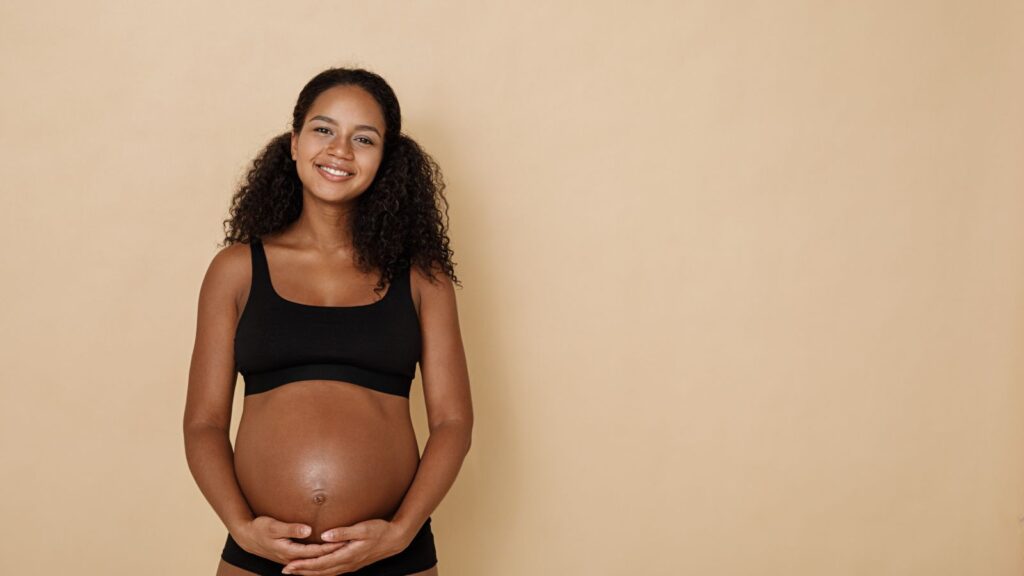Each pregnancy is unique, and so is the timing of the baby bump’s debut. Factors like a woman’s body type, whether it’s her first pregnancy, and even her genetics play a role. We’ll explore these factors and more, providing insights into this magical stage of motherhood.
So, if you’re on the journey to becoming a mother or simply curious about the process, let’s delve into the world of baby bumps and discover what influences the timing of that first exciting reveal.
What Does Showing Mean in Pregnancy?
“Showing” in pregnancy usually refers to a visible baby bump. It’s the stage at which an expectant mother’s abdomen begins to protrude, hinting towards the life forming inside. Variations exist when pregnant women start showing. Multiple, interconnected factors contribute to these variations, some of which were previously mentioned such as the mother’s body type, the number of previous pregnancies, and genetic configurations.
Consider it a physical milestone in the course of a woman’s pregnancy journey. The onset of showing isn’t bound by rigid guidelines. Some women start displaying noticeable bumps as early as 12 weeks, while others might not be visibly pregnant until around 20 weeks. This visibility mainly depends on the expansion of the uterus. As the pregnancy progresses, the uterus grows to accommodate the developing foetus, causing the belly to protrude.
Despite sometimes being seen as an affirmation of pregnancy, irrespective of its visibility, growth and development continue within. Even if a woman isn’t showing, it doesn’t imply lack of progress. Different activities take place internally, some of which can differ marginally or significantly from pregnancy to pregnancy.
Additionally, the ‘showing’ symbolises a tangible connection between an expecting mother and her unborn child. It marks a visible transition from conception to physical form. Furthermore, it often sparks emotional nuances among expectant mothers – excitement, anticipation, bonding, and sometimes, insecurity tied to body image.

Determining When You Start Showing in Pregnancy
Determining when an expectant mother starts to show during pregnancy involves many factors. Among them: the position of the baby in the uterus, the amount of amniotic fluid, the number of previous pregnancies, and even one’s pre-pregnancy weight. This underlines that every woman’s pregnancy experience remains unique, as each body carries a baby differently.
Identifying the physical changes in a mother’s body can prove helpful in deciding. For instance, in the initial months of pregnancy, some mothers might perceive a noticeable weight gain rather than a distinct baby bump. However, the bump usually becomes more apparent around 12 to 16 weeks of pregnancy. More generally, first-time mothers start showing between 16 and 20 weeks. Mothers who’ve had a previous pregnancy may tend to show earlier, typically around 12 to 16 weeks, as their abdominal muscles have stretched before.
Factors such as carrying twins or multiples also play a role, often leading to women showing earlier. The Mayo Clinic confirms that expectant mothers pregnant with twins or more typically show earlier than those carrying one baby. On the flip side, women with stronger abdominal muscles may show later as their muscles can hold the growing uterus in for a longer span.

The Timeline: When Do You Start Showing in Pregnancy
Starting from conception, pregnancy triggers a series of physiological changes in a woman’s body. Generally, such transformations become evident externally between 12 to 16 weeks into pregnancy. However, it’s crucial to note that this timeline isn’t set in stone but rather varies among individuals.
First Trimester: Weeks 1 to 12
In the initial stages of pregnancy, women generally don’t show. Despite substantial internal developments like the formation of the placenta, changes to the uterus aren’t visible from the outside. Pregnancy symptoms during these weeks are primarily hormonal, including fatigue and morning sickness.
Second Trimester: Week 13 to 27
This stage typically marks the beginning of visible signs of pregnancy. Around week 16, first-time mothers may notice a slight rounding of their belly. Women who’ve had previous pregnancies might start to show as early as week 12. One may experience the so-called ‘baby bump’ due to the uterus rising in the abdominal cavity.
